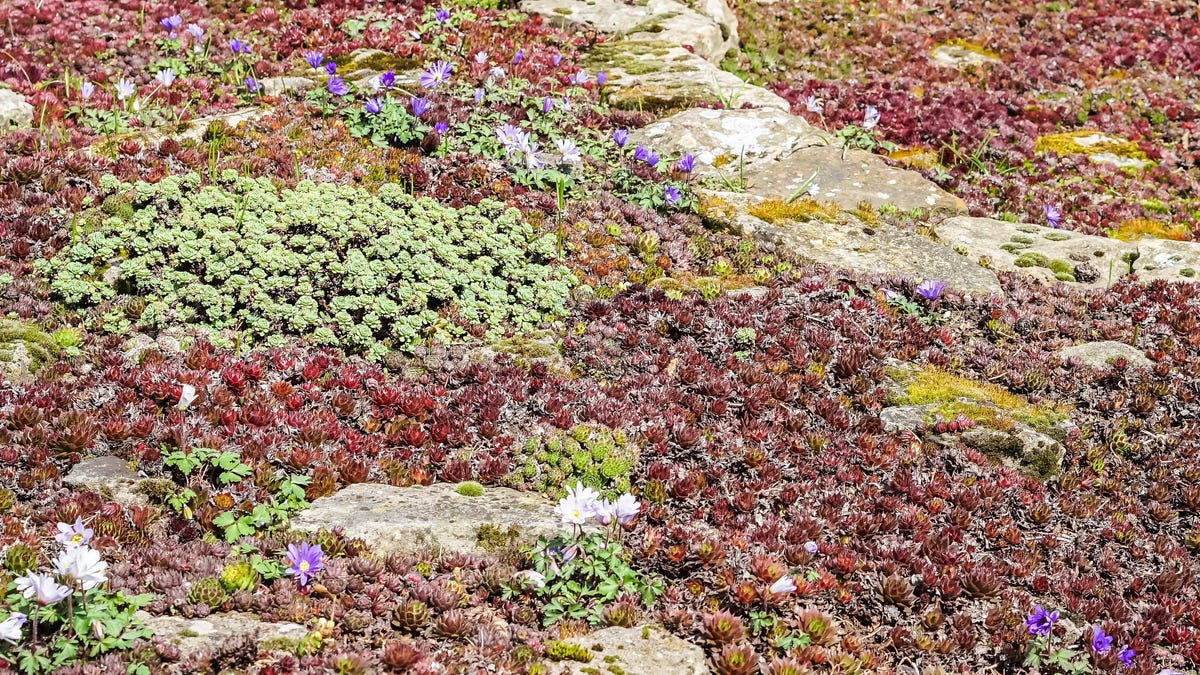
After decades of the assumption that a proper lawn must be made up of a single type of uniformly green—and freshly mown—grass, people are realizing that there are other (far less time-consuming and more environmentally friendly) options out there. One of these is a tapestry lawn.
Here’s what to know about this landscaping trend, and how to plant your own tapestry lawn.
What is a tapestry lawn?
Tapestry lawns are a patchwork of low-growing perennial flowering plants that can tolerate mowing. So instead of a traditional lawn of a single type of green grass, tapestry lawns are a living collage of flowers and ground-cover foliage of different colors and textures.
But that doesn’t mean tapestry lawns are overly delicate: You can still walk on them as you would a lawn made of grass. (Although they’re probably not the best option for households with younger, active children who spend a lot of time playing on the lawn.)
Plus, tapestry lawns are not only more interesting to look at, but they’re also easier to maintain—reducing the need for mowing by up to two-thirds, and growing without artificial chemical fertilizers. They also absorb rainfall twice as fast as traditional lawns.
Finally, the diversity of flowers in tapestry lawns also gives bees and other local pollinators more to work with, and the chance to do their job from early spring through late fall.
How to plant a tapestry lawn
Like any other type of lawn, prior to planting a tapestry lawn, you have to prepare the soil. That means testing it and then amending it to make sure it has the right nutrients, pH level, and physical characteristics (i.e. not being too sandy, hard, clumpy, etc).
There are no specific mix of plants required to create a tapestry lawn—just opt for those that grow well in your soil conditions and climate. These often tend to be native species. Some of the most popular ground-cover plants for tapestry lawns include thyme, chamomile, yarrow, creeping Jenny, and white clover.
Make sure your newly planted tapestry lawn gets enough water—especially in the first two to three weeks. The amount you need to water it will depend on how much rainfall you get during that period, but generally speaking, it’s a good idea to water your germinating tapestry lawn twice a day for 15-20 minutes: Once early in the morning, and again in the early afternoon.
Credit: Source link



